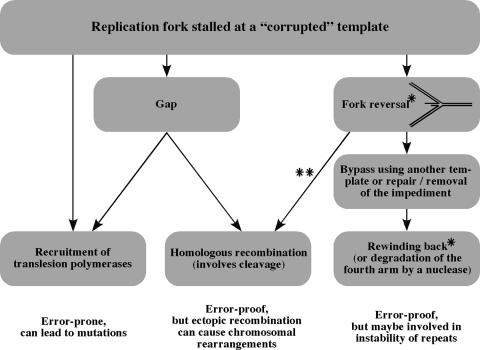FIG. 9.
Replication restart. A schematic representation of pathways that act to restart a replication fork, stalled at a “corrupted” template, is shown. See the text for details. *, reversal and rewinding of the fork are most likely assisted by proteins; DNA supercoiling may also contribute to both processes. **, generally, two models that explain replication restart by homologous recombination exist; they differ in the sequence of events. (i) Formation of a D loop (the short arm of the four-way junction invades the parental duplex downstream of the junction) and reestablishment of the replication fork (i.e., reloading of the polymerases and other fork components and resumption of DNA synthesis) are followed by cleavage. (ii) Cleavage (which releases a full chromosomal arm) is followed by the formation of a D loop and reestablishment of the replication fork.

